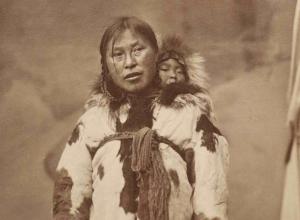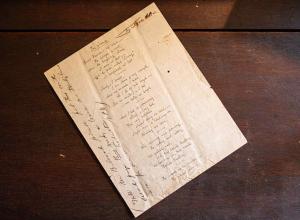From A to Z: The (New) Dictionary of the Book
 Make room on the reference shelf. Sidney E. Berger's newest book, The Dictionary of the Book: A Glossary for Book Collectors, Booksellers, Librarians, and Others (Rowman & Littlefield, $125) is a remarkably comprehensive volume of book terminology, beginning with ABA and ending with zinc cuts nearly three hundred pages later, plus related appendices and a foreword by Nicholas Basbanes, who calls Berger's opus "a reference of first resort."
Make room on the reference shelf. Sidney E. Berger's newest book, The Dictionary of the Book: A Glossary for Book Collectors, Booksellers, Librarians, and Others (Rowman & Littlefield, $125) is a remarkably comprehensive volume of book terminology, beginning with ABA and ending with zinc cuts nearly three hundred pages later, plus related appendices and a foreword by Nicholas Basbanes, who calls Berger's opus "a reference of first resort."
Berger will be known to many of our readers. He was the director of the Phillips Library at the Peabody Essex Museum and, prior to that, the curator of printed books and then the curator of manuscripts at the American Antiquarian Society. He has taught rare books and librarianship courses at Simmons College and at the University of Urbana-Champaign. He did a seven-year stint as an antiquarian bookseller early in his career, and he even makes paper, casts type, and prints short texts at his Doe Press. His qualifications for this undertaking are irrefutable.
After perusing the book, I called Berger and asked about the impetus for this dictionary--46 years in the making--and how it differs from other sources like it. Here's the transcript of our conversation:
RRB: What prompted you to write this book?
SB: I have been teaching the history of the book since 1971 and I've used all the editions of Carter's textbook [ABC for Book Collectors], always knowing that there were terms that I would like to add to Carter. In fact, for every one of my classes--not just the history of the book but other book history classes--every time I taught, I would make a list of terms that I would like my students to know, many of which are in Carter, but many, many more of which were not. So my list grew from 500 to 600 to 700 to 800 words, and over the years, my list became much more germane to the rare book world than Carter's.
Carter's book is excellent for what it purports to be, but Carter left out a lot of things that he was not interested in. He was not interested in the book as a physical object so much. I mean there are some entries in there, but I have a huge amount of information about that, and my feeling is, if you're selling these items, if you're collecting them, if you're a librarian dealing with them, you need a vocabulary that covers the territory, that describes the objects thoroughly and accurately. Other glossaries on the market--I'm going to say that generically--but I'm specifically referring to Carter, but there were other glossaries, and they had terms that were current at the time those glossaries were compiled, and words change meaning. New words are formed. For example: Internet bookselling. Carter didn't have an entry on that because he couldn't have, the Internet didn't exist when he wrote his book. And that's only one of hundreds of examples of things that other glossaries lack but which were in the current parlance of the trade--booksellers, book collectors, librarians, archivists, historians, and anybody interested in books as physical objects, as commodities to be bought and sold, as containers of information.
Anybody who deals with books needs to know the full vocabulary of them so that they can, first of all, talk intelligibly and correctly about them, and second, so they can communicate with one another using like words. Carter was very good in his day, for his relatively narrow audience. I think my audience is broader than his. But it completely encompasses his audience, and the audience that he and the other writers of such glossaries had, I have always believed needed much more information than they provided. That's why I've been thinking about this book since 1971. Little by little, I've been compiling my own list of terminology that I thought was essential for people working in the field. What I tried to do was to be as comprehensive as possible, to give the vocabulary of the book world to the widest range of people who need it. And for all the major and minor terminology, even the minor terminology is important if you have a phenomenon and you don't know what to call it, then what do you call it? There's a book that if you hold it face up right in front of you, you can read it, but if keep the spine to the left and flip the book top to bottom, you're looking at another front cover. So you can read the book halfway through and that's one text, and you flip it and read it again and it's another text. Well, there is a word for that. Carter doesn't have it. None of the other dictionaries on books has it. It's called tête-bêche. It's a term that exists. There's lots of books out there that are tête-bêches. In fact, Saks Fifth Avenue catalogues come out as tête-bêches. I have a couple of them in my office. It goes back centuries. It's a genre of book production. I'm using that as a single example.
RRB: What distinguishes your book from other reference books like it?
SB: My dictionary has over 1,300 terms in it. It's about twice what Carter has. The other thing is, none of the other editions was extensively illustrated. Glaister's Encyclopedia of the Book had some illustrations in it, but from my perspective, how do you explain certain things without showing them? The old cliché, 'A picture is worth a thousand words,' you know. I have 150 illustrations in my book. I think they are tremendously revelatory of the things that I'm writing about. They will reveal a huge amount of information.
I don't want to denigrate any other volume that's out there that can help us in the book world talk about books as objects, but your readership really needs a solid, reliable text that gets the words right so that we're all talking the same language and we're using the language correctly. There is no volume out there now that does that, except mine, that I know of. There might be others out there, but I've done my research, I haven't found any!
RRB: Tell me about your experience and history in the book world.
SB: I started working as a graduate student in the 1960s at the Center for Textual Studies at the University of Iowa. This was a national center devoted to editing, book history, textual scholarship, historical bibliography, descriptive bibliography, enumerative bibliography, and half of my PhD was in this field. The other half was medieval English literature, in which I studied the medieval book, the medieval manuscript, its manufacture, the making of the ink, the making of the parchment, the making of the quills, the transmission of texts from one generation to the other, and so on. From the sixties till today, I have been teaching courses in this, I have been writing articles about it, I've been giving lectures, I've read all of the literature, I know this field as well as just about anybody ... I've immersed my whole life in this stuff. I've written five books and about sixty articles about paper. I know more about paper than anybody needs to know! I come at this with expertise from many angles. I've made my own paper. I have cut my own punches, made my own matrices, cast printing type by hand. I have been a printer and studied fine press printing for many years, and I've been printing for fifty years. I've printed on thirty or forty handpresses over the decades. I come at this not just from having read about it, but having done it. The only thing I haven't done is I haven't made parchment. I haven't killed a sheep--I'm a vegetarian, I won't do that. It's really clear that no other glossary or dictionary of this kind was compiled by somebody with the same kind of scholarly and hands-on immersion in the field as I have had.
RRB: How long did it take to compile this book?
SB: Forty-six years! I'm not kidding you. In graduate school, I took printing from Kim Merker. He was one of the great twentieth-century book designers and printers. We were working on old Washington presses, and since then, I've printed on Columbians and Albions and wooden handpresses and Acorn presses...I started learning about books from the ground up. I have my own press, by the way, the Doe Press. If you look an entries like makeready or tympan and frisket, or look at handpresses--I know the tools of the trade intimately. I've used them.
I actually starting compiling the knowledge in about 1965. When I started teaching courses in the history of the book, I started making my list of terms. There was no book out there--I mean, Carter was available, but it was never enough--so I was always giving my students lists, starting with about 370-400 terms, and as the years went by, and I continued to teach these classes, more and more terms occurred to me. Little by little, my list kept growing, and the latest iteration of it was about 800-900 terms, and at that point, I said, I have the makings of a book.
I think the book that I have produced should be the standard go-to Bible for anybody working in the book trade: collectors, booksellers, librarians, archivists, historians, artists, bookmakers, bookbinders, printers. Every term that I thought would be useful, I put in there. Every term is not going to be useful for everybody in the audience, but this is a broad audience ... I feel fairly proud of this, this is a lifetime achievement type of book. It comes from more than fifty years of immersing myself in the world of books.
RRB: You're a collector, as well?
SB: Yes, my wife and I have a substantial collection of books: fine press, some rare books, particular private presses, and an enormous collection of books on the book arts. Of course, our paper collection* is the largest paper collection in the U.S. We just sold it to Texas A&M University. It had 21,400 sheets in it. The papers go back to 740 AD.
*You can read Nick Basbanes' profile of Berger's paper collection in the summer 2013 issue of FB&C.
Image Courtesy of Rowman & Littlefield.















